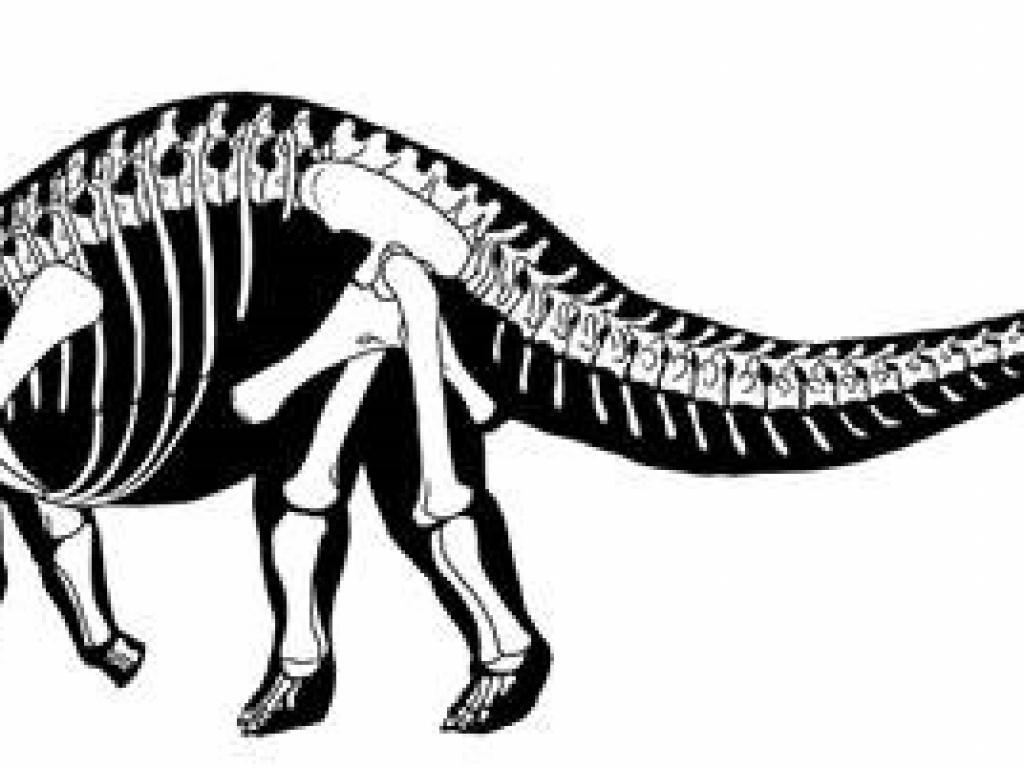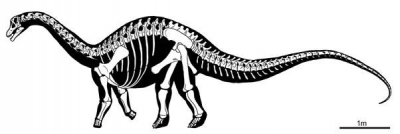Scientists can detect dinosaur disease after 72 million years


Professor Anusuya Chinsamy-Turan and colleagues from the National Scientific and Technical Research Council (CONICET) of Argentina, examined more than 74 bones of armoured titanosaurs from Argentina (Supplied).
In a paper published today in Nature’s Scientific Reports, a team of South African and Argentinian scientists has shown that disease was prevalent among some of the largest known dinosaurs, the aptly named titanosaurs. The largest dinosaur to ever have lived was a titanosaur, weighing in at about 70 tons; it stood 20 metres tall and measured about 40 metres in length. Incredibly, even after 72 million years, traces of the diseases that afflicted these behemoths still remain in their fossilised bone microstructure.
University of Cape Town (UCT) palaeobiologist, Professor Anusuya Chinsamy-Turan, and colleagues from the National Scientific and Technical Research Council (CONICET) of Argentina, examined more than 74 bones of armoured titanosaurs from Argentina. They found that three of these titanosaur bones - a metatarsus (a bone from the foot), a vertebra (backbone) and a bone from the skin (called an osteoderm) - showed unusual features in their microscopic structure: bony growths along the internal edges of their bone walls. Closer examination under a microscope revealed that this bony tissue contained a rich supply of blood vessels (vascularised), and that it was formed very quickly.
When making deductions about the biology of long dead dinosaurs, scientists often turn to their living relatives (crocodilians and birds) for clues. Curiously, during ovulation, female birds form a similarly richly vascularised bone tissue, called medullary bone, along the inner edges of their bone walls, from which they remove calcium to make their eggshells.
The similarity in the type of the tissue and its location led a few palaeontologists to suggest that the occurrence of this bone indicates that dinosaurs – such as, for example, T. rex – also formed medullary bone. However, this new research shows that the story is much more complex. It appears this unusual bone tissue is also similar to bone formed in response to disease in other vertebrates, such as Paget’s disease of the bone (a disorder which causes abnormal bone destruction and regrowth) and osteomyelitis (an infection of the bone).
Argentinian paleobiologist/paleontologist, Dr Ignacio Cerda of CONICET says: “In our study, it is clear that the unusual tissue in the foot bone was a pathological response”. UCT’s Chinsamy-Turan says: “The situation is further complicated since in at least two other non-avian dinosaurs, and in a juvenile (i.e. non-reproductive) dinosaur, similar bone tissues were definitely formed in response to disease. Given the uncertainty of the diagnosis, my colleagues and I argue that it is better to err on the side of caution until pathological bone tissues can be clearly distinguished from avian medullary bone tissue.”

Caption: A skeletal reconstruction of a saltasaurine titanosaur from Argentina (Supplied).
